Bilingualism
Psychologist Ellen Bialystok on simultaneous learning of different writing systems, cognitive reserve, and mul...
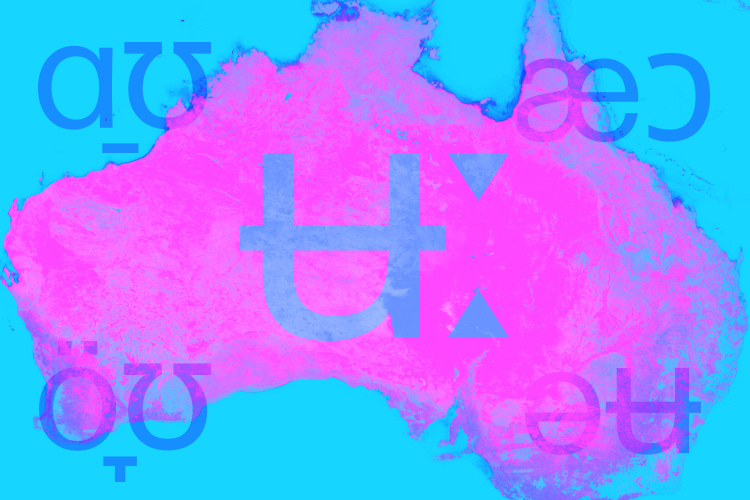
The term Australian language refers to any indigenous language spoken on the Australian continent. There is just one small boundary question for the languages of the Torres Strait between Australia and New Guinea. These two languages are spoken: one of them (Meryam Mer) is Papuan, and the other one (the Western Torres Strait language) is classified as the Australian language of the Pama-Nyungan family. The important thing to stress is that Australian languages share no real similarities with Papuan languages or with Austronesian languages, which are the two other groups of languages we find in Oceania (and note that ‘Papuan’ itself is not a single family, but simply a complex residual group with somewhere between forty and sixty unrelatable groupings and isolates at our present stage of knowledge).
The peoples of northwestern Arnhem Land believe that the first human on the Australian continent was a woman named Warramurrungunji, who traveled from Macassar in Indonesia. She gave birth to many children and put them into particular areas assigning them languages that they should speak. Of course, it is a local myth, and it does not extend beyond the western regions to make a claim about other parts of Australia, but the point about it is the high value it places on language diversity as a way to make sure that everyone knows their place and identity in the wider scheme of things. From the legend, you may see that language diversity is something built into the Universe from the beginning and that it’s an essential part of the social order.
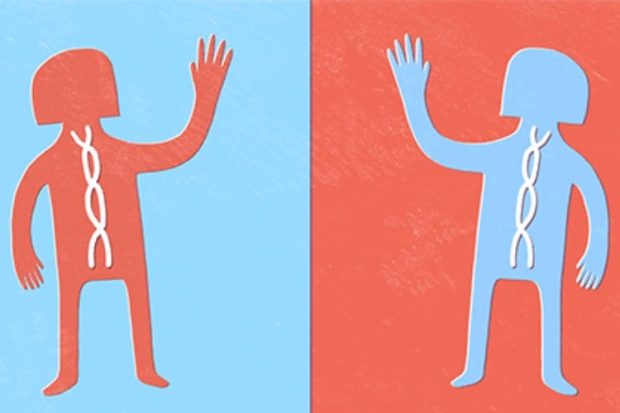
How many language families are there in Australia? If we take the word “family” to mean “a maximum group of related languages”, something like Indo-European or Afro-Asiatic, someone who is a lumper who believes in grouping things together might reply there is just one Australian family, whereas someone who is a splitter, who says we shouldn’t do this unless we have solid proof and just look at the largest units where we have proven connections to those highest standards, they will come up with about 20 families. It depends on what level of similarity you take as sufficient to establish relatedness. I’m inclined to the first view and say there is one big family and about 20 branches or subgroups within that. The largest family, Pama-Nyungan, covers 7/8 of the Australian continent, and the others are all concentrated in the northwestern part and present a much greater level of diversity in terms of the degree of mutual relatedness.

There is still some disagreement among scholars about whether or not to regard Australian languages as related. The more cautious scholars would say, “Yes, they all exhibit similarities, but these could arise in other ways, e.g., through languages converging through long co-residence on this continent”. And indeed, if you listen to a recording of any Australian language, it is immediately recognizable, and you will say, “That is an Australian language”. The level of similarity is highest in phonology. As for morphology, there are also shared suffixes and about 10-20 verb roots (bu ‘hit’, wu ‘give’, ni ‘sit’, na ‘see’ and so on). But in terms of strictly applying the comparative method, which typically requires hundreds of cognate words and regular sounds, then there would be some languages in Northern Australia that we could not directly prove are related to others; the problem is that, as the Pama-Nyungan group broke away from the others, it restructured its words rather radically, dropping the complex prefixal systems which are found in almost all other Australian languages. Yet it is those very prefixes and the similarities between them, which provide the best proof relating the non-Pama-Nyungan languages together, hence establishing them as part of a single Australian family. Those proto-Pama-Nyungan speakers, as they dropped the prefixes out of their language, were unknowingly trashing the best evidence we could have, many thousands of years later, for relating all the Australian languages to each other.
But all is not lost. Luckily there are some non-Pama-Nyungan groups, such as those of the Gunwinyguan family, where we can look at the other end of the word – in the system of suffixes – and retrieve enough similarities to establish links between Pama-Nyungan and e.g. Gunwinyguan. Then, in a second step, we establish the relationships between all the non-Pama-Nyungan languages, using their rich shared prefixal morphology. This task is far from complete, but by following this logic I believe we will gradually be able to assemble evidence linking all Australian languages together in a single family. This will be of great scientific importance. Aboriginal people came to Australia nearly 60,000 years ago, and there has not been any substantial immigration since then, at least not until the arrival of Europeans. The simplest account is thus one in which the Australian language family is 60,000 years old. Saying that is something of a taboo for linguists, who think that languages change much faster than that, but I think it’s important for us to stare this possibility in the face. Once we do, the date for humankind’s first evolving language starts to look much older if we bear in mind that the Australian language family is only one among hundreds in the world.
As for the number of languages themselves, we need to go back to the moment of the first European invasion. In 1788 before European colonists arrived, there were around 250-300 languages (not counting dialects). Here by language, we mean something that is distinct enough to need its own descriptive grammar. Around 120 of them are already gone, meaning that there are no speakers of those languages. There are only about 20 that are transmitted to children, which we call “healthy”. The “healthiest” regions in terms of language maintenance are Arnhem Land, the Daly River area, the Tanami Desert, the Western Desert, Central Australia, Western Cape York, and the Torres Strait. Looking at the main causes of this dramatic language loss – the worst on any continent – in the country’s first two centuries, it goes back to all sorts of repression, such as punishing people for speaking their language, not to mention all sorts of massacres, removal of their children from their parents and so on. But today, the biggest threat is the Anglo-Australian belief that monolingualism is normal, so that time and mental capacity should be fully allocated to English in the school curriculum and elsewhere. This disregards the fact that traditionally multilingualism was quite normal and that Aboriginal people were astonishingly good linguists.
On top of that number of languages, there are many further distinctions between dialects. What’s the distinction between a language and a dialect? The famous saying by Max Weinreich, that “a language is a dialect with an army and a navy,” would never have been applicable in Australia, but if we look at how Aboriginal people talk about language differences themselves, they will often use the word “different language” to mean any distinct variety, be it another dialect or a totally distinct language. So we have to have another measure, and this can get tricky. One measure that linguists sometimes use is the percentage of shared vocabulary – e.g., two varieties sharing over 85% would be deemed to be the same language – but this is not a really reliable test. On the one hand, sometimes two varieties share over 85% of vocabulary but organize their grammar in completely different ways – this is what I found when I did my doctoral studies on Kayardild, which differed radically from its close relative Yukulta in how it organized its grammar, despite sharing around 85% vocabulary. On the other hand, you find long ‘dialect chains’, like the language in the Western Desert, where if you travel from Central Australia to the Indian Ocean, each step involves a small adjustment, maybe just a few percentages of vocabulary difference, but then between the ends of the chain you get 60% of change, and they would be deemed distinct languages. It is because these criteria are problematic that linguists prefer to use the criterion of whether a distinct grammar needs to be written or whether it is possible to write a single grammar with notes on variation between dialects – that’s what I did with my grammar of Bininj Gun-wok, which sets out a unified structure but where necessary gives details of how one dialect or another – say Kunwinjku, or Gun-djeihmi – is different in some part of its grammar.

This is one of the great unanswered questions in the field. And it is embarrassing that we cannot answer it – partly because until recently, the field of linguistics has not considered it as a core question. Of course, there are lots of seemingly attractive hypotheses. The easy bit to answer is that it is normal for regions all over the world that lack a history of centralized states to have high levels of diversity. This is because it takes the powerful apparatus of a centralized state to impose linguistic homogeneity. In that sense, one should be asking not why Australia (and other regions like it) have so many languages but why some other parts of the world have so few. But that still does not explain how diversity arises in the first place. One suggestion that lay people often suggest – is isolation. But that’s clearly false because if you look at the areas of really great diversity like Western Arnhem land or Southern New Guinea, people there are in regular contact with each other, and they speak really different languages. You just wade across a small creek and there you are in the territory of another language. Another type of hypothesis is about rainfall, or the length of the growing season – that the more generous the environment, the more groups a region can support. But at best, this can only be a distal cause: rainfall cannot simply convert one language into many. At best, climatic or geographical causes like this favor the development of certain types of society, which then encourage linguistic diversification for social reasons. So that puts the onus on us to find and measure the key social processes that are involved.
The real challenge, then, is to say what those social processes drive differentiation. The first step is to see how new linguistic elements are born: new sounds, new grammatical structures, new words, and new meanings. What makes the range of these more or less diverse in different groups? For example, does being multilingual add options to the pool? Or could there be other environmental factors, such as greater genetic diversity in a regional population, that favor greater differentiation in evolutionary pathways, e.g. by creating larger diversity in what is easier to pronounce if we consider sounds? That’s the first step, generating individual diversity.

The second step is to find how society promotes one variant over another. It is clear that some groups have linguistic ideologies that place a high premium on harnessing linguistic means to say, “Our clan is different”, “our moiety is different,” and so on. Ideologies like this can then seize on individually-generated variants – which may otherwise have been ephemeral or idiosyncratic – and promote them as a marker of social identity, driving along the process of diversification. Though this all sounds plausible, it is a sad fact about linguistics that, for now, our understanding is at the anecdotal level. What our science needs is to have really detailed matched studies that get down into individual speech communities, look at lots of different individuals, how they speak, compare the differences, and see how the societies they live in judge those differences – and whether the magnitude of these processes differs, in turn, from cultural region to cultural region. That’s what our current project called The Wellsprings of Linguistic Diversity is trying to do. We’ve got three high-diversity regions: Arnhem Land in northern Australia, Southern New Guinea, and Vanuatu. We are going down to the speech community level, interviewing lots of individuals, asking them to tell stories, and then looking at how much they differ from individual to individual, comparing them with big languages like English or Spanish, middle languages like Samoan, and trying to understand what’s driving the process of diversification. Because to understand how things are different, you have to understand the process of how they become different.
The kinship terms in Australian languages are incredibly complex, probably the most complex in the world. Firstly, they are what is called a universal system because there are rules that bring people in, in principle allowing every person on this earth to be denoted by one of a closed set of kin terms combined with rules of semantic extension. This works because it’s a recursive system, employing ‘equivalence rules’ to make step-by-step deductions about how to extend terms outwards. For example, “my father’s brother” is the same as “my father” by a rule of ‘same-sex sibling equivalence’; therefore, instead of what in English would be called “uncle”, I call him “father”. And my father’s brother’s son (what in English would be “my cousin”) is the same as “my father’s son”; in other words, “my brother”. Then we can go on further and apply the same logic, recursively, to “my father’s father’s father’s brother’s son’s son’s son”, and the person would come out as “brother”. Therefore, having the basic set of terms and equivalence rules, you could just take yourself as an example and hypothetically, armed with the total knowledge of the history of humankind, find someone from Southern Africa whose family tree diverged from yours 125,000 years ago, but whose relationship to you is FFF….FBS….SSS, going all the way up the family tree to your ‘apical ancestor’ and back all the way down, and bring him as a close kin – your brother! This is a very powerful system of reasoning that allowed Aboriginal people to form alliances right across the continent. You could meet anyone and work out how they are related to you, and by doing that, you extend your social network – something vitally important if you live a traditional life in the desert, with the need to relocate the country of distant kin in times of drought in one place and rainfall in another.
The second thing to say about kinship is that lots of Aboriginal languages have special terms that show kinship reference from two angles at once. Let’s say Person A discusses with Person B someone who are Person A’s mother and Person B’s daughter. How would one of them refer to that person in English? Whether she should be referred to as “mum” or “daughter” is actually a choice of perspective, and people don’t always agree on it. What happens in many Australian languages is a unique system that expresses both perspectives at once, giving hundreds of words with meanings like ‘the one who is your daughter and my mother, me being your granddaughter’. Such systems are almost unique to Australia – the only other place that a couple of similar systems are found is in the Amazon. Using them cultivates the ability to see the world from more than one perspective at once.
Many Australian languages present challenges to receiving ideas about what is possible in a human language. I will start with my favorite language, Kayardild, which I’ve worked on since the time of my Ph.D. Let’s look at its case system as an example. The cases are stacked on top of each other to an extent not found in any other language. Consider “my brother’s wife”. Here you take “my brother” and put the genitive case on each word of it – zhena mojego brata. If, in a language like Russian, I then say, “I give the book to my brother’s wife”, I put “wife” in the dative, but I leave “brother” in the genitive: zhene mojego brata. If you translate it into Kayardild you would not only place the genitive on “my” and “brother”, but on top of that you would also add the dative, which percolates down from “wife” on its modifiers: as if, in a sort of Kayardildized Russian (note that there is no gender and no declension classes in Kayardild), you were saying zhene mojego-jemu brata-u. That’s the first level of double case marking. There are a few ancient European languages that did it, such as Etruscan, a few languages in Ethiopia, and quite a few other Australian languages, but it’s otherwise pretty rare in the world.
But Kayardild just keeps turning up the complexity dial. The next thing you do, as you build up the suffixes on nouns, is that, according to your choice of tense (present/past or future), aspect, and mood on the verb, you put another suffix on all the noun phrases except for the subject; these suffixes are formally the same as case suffixes and derive from them historically (in my grammar of Kayardild I called them ‘modal case’). For example, “I WILL give the book to my brother’s wife” or “I GAVE the book to my brother’s wife”. In the case of WILL, you add a special ‘proprietory’ case which means “having something,” or in the case of past tense, I would select the ablative case. Let’s imagine how this would look in our pseudo-Russian, taking the instrumental as the nearest analog to the proprietory case (since the proprietory sometimes marks instruments in Kayardild). In the future tense, we would now have zhene-(v)oj mojego-jemu-(v)im brata-u-(v)om. Likewise, in the past, you would get “wife_dative_ablative” and “my_genitive_dative_ablative”, “brother_genitive_dative_ablative”. This means the information is propagated down through the syntactic tree, and the result is that each word has all the information to act on its own account.
Finally, if you embed one clause inside another clause, you will add a case on every word of the subordinate clause that marks it as belonging to the subordinate clause – dative or locative; according to conditions, we don’t need to go into here. The result is that words in a subordinate clause like ‘I caught this fish, so you can give it to my brother’s wife’, a word like ‘brother’ will end up in four cases, “brother_genitive_dative_proprietive_locative”, with each case coming from a higher syntactic position as if in one Russian you were to produce a word like brata-u-(v)om-e. In informational terms, all these cases are saying: ‘I am a genitive modifier of a noun in the dative that depends on a verb in the future tense that is in a subordinate clause’. So, you might get a single noun with four cases stacked up one after the other. No other language has such a level of complexity or has evolved anything like that. A useful byproduct of this system is that words are highly autonomous – sometimes people can use a single multiply inflected word – say “brother_genitive_instrumental_proprietive_dative” – to mean something like the following, putting the inferred parts driven by the ‘higher cases’ in square brackets: ‘[so it looks like (someone) will do it] using brother’s. Or words can be freely put in any order, to a far greater extent even than in Pushkin’s poetry, with the relations they hold to each other being inferable thanks to the case suffixes.

The strangeness of the Kayardild case system doesn’t stop here. So far, the ones I’ve been using are like case suffixes in Russian, except for the fact that they stack up and show strange additional categories. But on top of that, there are another eight or so suffixes that convert the words they attach to from nouns into verbs: they take a noun or adjective as input and output a word that still behaves in its syntax like a noun or adjective but now takes all the inflections that would go with a verb, such as negation, passive, special moods and tenses. Sometimes these come from verbs like ‘give’ or ‘put’, and sometimes from more complex expressions like locative-inchoative (at-become). Deriving case suffixes from words like that is not at all uncommon in the languages of the world, but what is unusual in Kayardild is that they hold onto all their rich verb-like inflections on the one hand while settling into the well-behaved role of case suffixes on the other (like appearing on every word of a noun phrase). This means that to say something like ‘I will not sing this song for that married woman’, the dative expression ‘for that married woman’ would come out something like ‘that-put-not-future husband-having-put-not-future woman-put-not-future’.
All these case suffixes are important to linguistics for another reason. We are just coming out of half a century where generative linguistics, as inspired by the great linguist Noam Chomsky, placed great emphasis on ‘Universal Grammar’, very much seeing all languages as alike with only minor variations. Part of this emphasis meant claiming there are all sorts of imaginable design options that are simply not found in language. For example, Steven Pinker and Paul Bloom wrote, in the early 90s, that ‘‘no language uses noun affixes to express tense’’. Now, clearly, this is simply wrong for Kayardild. It is an example of what can go wrong, scientifically, when one extrapolates prematurely from too limited a range of cases. Now there’s nothing wrong with the scientific strategy of making strong statements to invite falsification. But what Kayardild shows us – and many other languages I could have used to illustrate the structural originality of Australian languages in different ways – is that we really need to get out there and describe languages as they are to realize the full richness and diversity of how humans have colonized the design space of language through the languages they have built through use.
There is still so much to do and so many questions to ask, and I’ll just give four here. First is the historical question mentioned above, namely whether all Australian languages are related, and why they changed in the way they did – and also, how, if they do prove all to be related and descend from the first immigration 55,000 years ago, they changed so slowly. Related to this is the enigma of the Pama-Nyungan family, which covers 7/8 of the continent and seems to have spread down from northwest Queensland about 5,000 years ago, but without us having any clue about what cultural advantages they possessed to spread their language at the expense of hundreds of others across most of the continent. Language spreads in other parts of the world get attributed to intensification due to farming, military conquest, or the spread of a centralized state, but none of those explanations work in the Australian case; we are left with a total puzzle of why a single group spread so far, so rapidly.
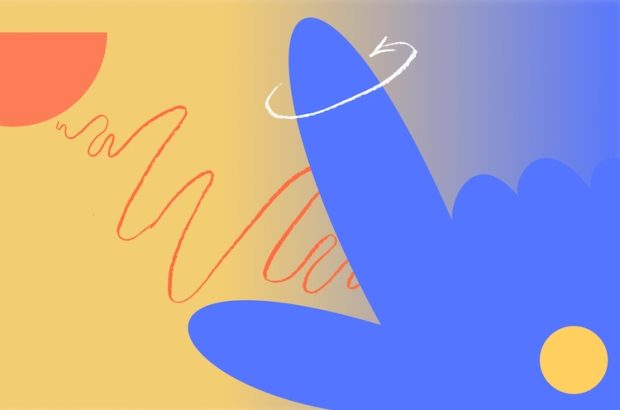
A second question comes back to our inquiry into what kinds of human languages are possible, as exemplified by our Kayardild example above. The world of languages holds more possibilities than any linguist has imagined, and Australian languages have taken the ‘design space’ in lots of rare and unusual directions so that we’re still finding new phenomena that people hadn’t imagined before. And even when we document and describe these interesting language structures, we still need to find out how they got to that state. Can we understand that by looking at how people talk because “grammars do best what speakers do most”? Can we understand how cultural preoccupations shaped the development of language in particular directions? These are deep and important questions.
That leads us to a third priority, more of a challenge than a question. If we want to go back and investigate a phenomenon in Ancient Greek, for example, we have many millions of words assembled into a corpus we can investigate, searching through it for examples. For no Australian language, do we have anything that approaches even 0.01% of this size – in the best case, what we have documented for an Australian language is just one slim pamphlet borrowed from a whole library. We need to do all we can to drive up the level of coverage here, concentrating on building up a bigger corpus for each language that really represents the cultural wealth and collective knowledge and memories of each group. When you think that, in many cases, the whole remembered library is, at this historical moment, conserved just in the heads of two or three old people, through their memories, you can see how important the linguist’s job of talking to these living treasures and putting their knowledge in more enduring form. It was to bring attention to the full dimensions of this problem that I wrote my book Dying Words: Endangered Languages and What They Have to Tell Us.

And fourthly and finally, we have the question of why there are so many languages in some parts of the world, such as parts of Australia. We currently still don’t understand that, and we need to understand what are the social processes that generated that. And the hard thing here is that the conditions that engender diversity – the sorts of multilingual settings where people are very aware of multiple linguistic codes and constantly cultivate linguistic differences to produce finer social signaling – are themselves severely threatened, even more so that the languages themselves. So we need a huge scientific push here. But I hope that in 10 years we will know more about that.
Finally, I would like to emphasize that though the points I have made are scientific ones, the whole enterprise is, at the same time a crucial one for the cultural well-being of the indigenous communities themselves. Imagine not knowing anything about your forebears because it wasn’t available in a language you knew. Or imagine that all of your cultural heritage had just been wiped out, never having been written down. Work on indigenous languages can make a vital difference to how people feel about their culture and hence themselves, giving them the pride, knowledge, and feeling of belonging that allows them to stand with one foot in their own traditional culture and the other in the globalizing world of today.
Edited by Ekaterina Vylomova

Psychologist Ellen Bialystok on simultaneous learning of different writing systems, cognitive reserve, and mul...
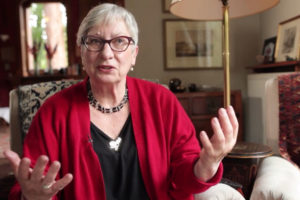
Developmental psychologist Uta Frith on the detection of dyslexia in children, difficulties with sound recogni...
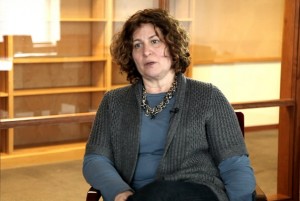
Harvard Prof. Maria Polinsky on receptive bilingualism, the "First In Last Out" hypothesis, and what people fo...